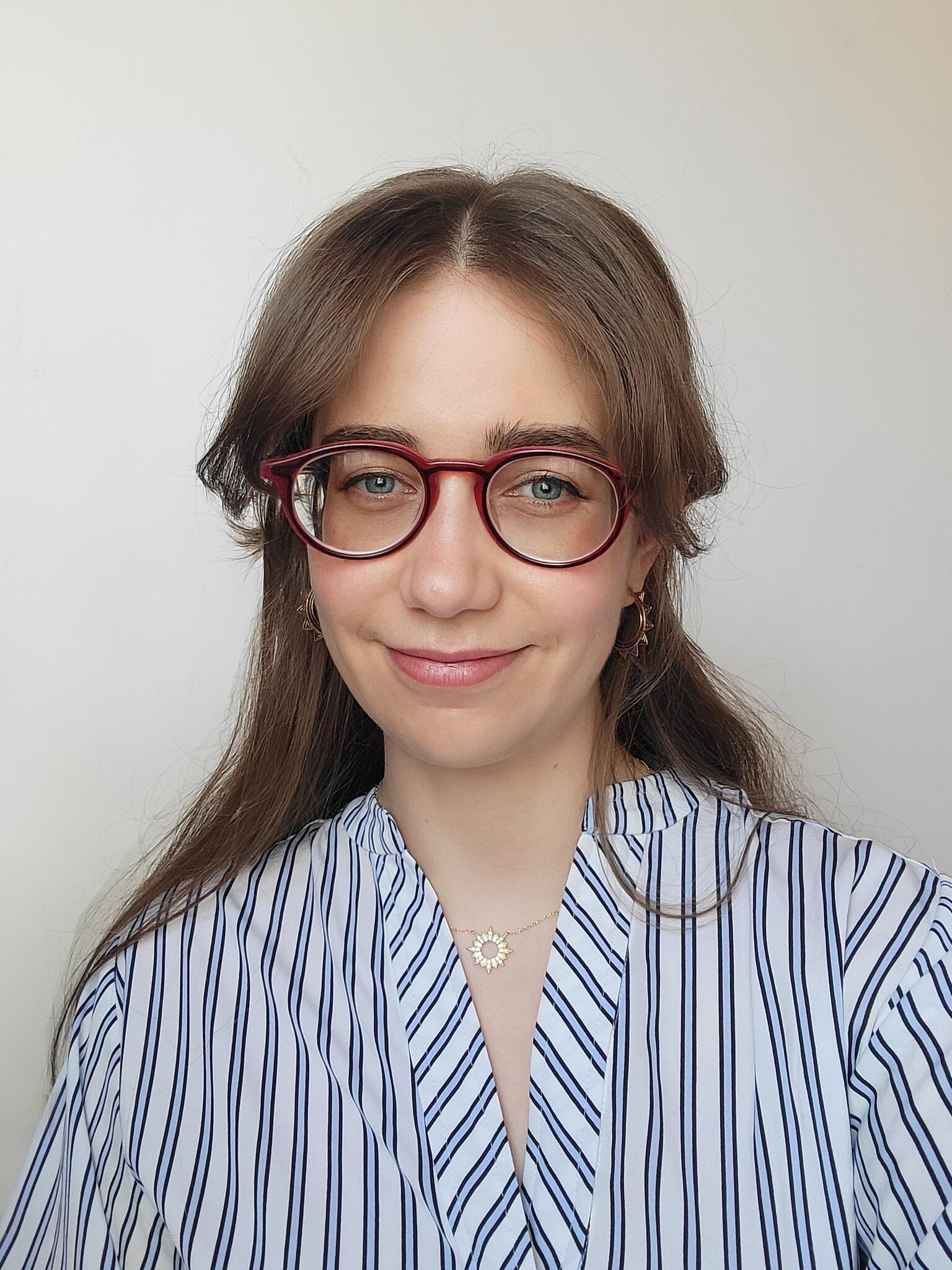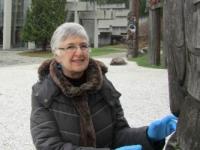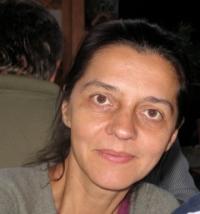We have launched an exciting interview series for the 40th anniversary of the Queen’s Art Conservation Program. Some of our recent students interviewed leaders in the conservation field who have links with the Program. We are very pleased to showcase the work and impact these people have had nationally and internationally. This initiative is also a wonderful opportunity for students to have personal contact with conservation professionals. The lasting result of this project is for these fascinating interviews to appear on the Art Conservation websites where they have the potential to inspire prospective students, the Queen’s community, and the public.
You will see from the list below that most of the people interviewed are graduates of the program, but this is not always the case. For example, Laura Hashimoto (M.A.C. 2015) interviewed Ian Hodkinson, the founder of the Queen’s program. When Makedonka Gulcev interviewed Season Tse from the Canadian Conservation Institute about her colleague, the late Helen Burgess (M.A.C. 1979), and her important impact on conservation, Makedonka also took the opportunity to interview Season, whose help has been so pivotal for Queen’s students, through her lectures and discussions about research.
This interview series is a project we intend to continue. We hope you enjoy reading the first of these conversations that took place in the spring and summer of 2015. The interviews have been edited for clarity and brevity.
Conversations with Our People
Dr. Aaron Shugar, Bader Chair in Art Conservation
 Conservation science student Katelin Hallchurch interviewed Aaron in the spring of 2023, just before joining Queen’s.
Conservation science student Katelin Hallchurch interviewed Aaron in the spring of 2023, just before joining Queen’s.
Q: Tell me about your career path and what drew you to conservation science in particular.
A: I had a unique and very lucky career path. I started my undergraduate degree in honours business administration at Wilfrid Laurier University. Within the first year, I realized that I did not want to follow that path, but one of my favourite courses while at Laurier was anthropology; I transferred to York University for a double major in law and society and anthropology, focusing on Theravada Buddhism in Sri Lanka for my thesis. From there I got into archaeology. I was very interested in it and ended up working in Israel for several years as a site archaeologist for Jerusalem University and the Israeli Antiquities Authority.
Lindsay Sisson (M.A.C. '20)
 Professor Rosaleen Hill caught up with our newest Bader Fellow in Paper Conservation, Lindsay Sisson (M.A.C.’ 20) to find out more about her post-graduation activities.
Professor Rosaleen Hill caught up with our newest Bader Fellow in Paper Conservation, Lindsay Sisson (M.A.C.’ 20) to find out more about her post-graduation activities.
Q: What have you been up to since you graduated?
A: Since finishing my Master degree at Queen’s University, I have worked for the Provincial Archives of Alberta as a Young Canada Works Intern and an Assistant Conservator. While there, I contributed to the treatment of textual, photographic, and film records within the Oblates of Mary Immaculate (OMI) fond, which contains information relevant to Indigenous history and communities in Western Canada. These objects were stabilized and documented so that they were available for digitization as well as for families and researchers to access. I also had the opportunity to work for the City of Calgary as a Summer Public Art Conservation Technician. I undertook preventive maintenance of the outdoor sculpture collection including overall wash, hot wax treatment (bronze), water sealant treatment, consolidation and inpainting. Additionally, I also began to develop a maintenance manual for the software-based artwork Calgary Scroll (2017). It has been an enjoyable experience to be able to work out-of-province and now return to Ontario!
Sally Gunhee Kim, M.A.C. 2019

Professor Emy Kim caught up with this year’s winner of the CAC Emerging Conservator Award, Sally Gunhee Kim (M.A.C. ’19) to find out more about her post-graduation activities. Sally was in the Artifacts Stream during her time at Queen’s and has been keeping busy since graduation.
Q: What have you been up to since graduating from Queen's?
A: After graduating from Queen’s University, I started my fellowship at Williamstown Art Conservation Center in Massachusetts. I feel really privileged to have been able to come to lab every day to work on diverse objects, ranging from a late-Victorian silver card table to Tang Dynasty terracotta figurines. Additionally, I have volunteered for both AIC and CACACCR. With the help of the AIC Equity & Inclusion Committee, I was able to launch the AIC Accessibility Survey. As for the CAC-ACCR, the organization will soon have its own committee to address diversity, inclusion and related issues in the field of conservation in Canada. So, please keep your eyes open for the launch of the CAC-ACCR Inclusion, at WACC Diversity, Equity and Accessibility (IDEA) Committee in May!
Valery Monahan, M.A.C. 1992
 It is a pleasure to introduce Valery Monahan (M.A.C. 1992) in our new Alumni Interview Series. Valery is a Conservator in Whitehorse, Yukon Territory and she shared some of her rewarding experiences working in this region with Kaoru Yui (M.A.C. 2020), graduate student of the Master of Art Conservation program at Queen’s University.
It is a pleasure to introduce Valery Monahan (M.A.C. 1992) in our new Alumni Interview Series. Valery is a Conservator in Whitehorse, Yukon Territory and she shared some of her rewarding experiences working in this region with Kaoru Yui (M.A.C. 2020), graduate student of the Master of Art Conservation program at Queen’s University.
Q: Why did you decide to go to the Yukon Territory?
A: One of my Queen’s internships was actually in the Yukon. I did a three-month internship with Parks Canada in Dawson City, Yukon. When the job here was advertised, I had a sense of what Yukon was like and I had been here before. When I saw the job description, it seemed like a good match for some of the projects that I worked in the past, and also had elements that really spoke to me in terms of working with archaeological materials, working directly with the First Nations communities, so I applied.
Helen Burgess, M.A.C. 1979
 An interview with Helen Burgess, (M.A.C. 1979, research), Senior Conservation Scientist, Canadian Conservation Institute:
An interview with Helen Burgess, (M.A.C. 1979, research), Senior Conservation Scientist, Canadian Conservation Institute:
Q:How did Queen’s prepare Helen Burgess for her career?
A:The Queen's program gave her a chance to combine her love of science and art and a chance to apply her knowledge of science to conservation. Her research at Queen’s consolidated a suite of analytical techniques for studying cellulose degradation and a focus on conservation bleaching that was to benefit the paper and textile conservation field for years to come. It also gave Helen the chance to exercise her gift of communication and teaching, as she helped many of her fellow classmates in understanding complex chemical concepts in conservation.
James Bourdeau, M.A.C. 1987
 An interview with James Bourdeau (MAC 1987, paintings), Director of Scientific Services, Canadian Conservation Institute:
An interview with James Bourdeau (MAC 1987, paintings), Director of Scientific Services, Canadian Conservation Institute:
Q: What do you like the most about your job?
A: The goals of public service dovetail very well with the altruistic aspirations of conservators to save things for posterity. What I enjoy most is that each week I could be running around reviewing many different conservation and heritage trades projects in heritage buildings and advising project leaders on the way the work is proceeding.
Dr. Miriam Clavir, M.A.C. 1976
 An interview with Dr. Miriam Clavir (MAC 1976, artifacts), Research Fellow and Conservator Emerita, University of British Columbia:
An interview with Dr. Miriam Clavir (MAC 1976, artifacts), Research Fellow and Conservator Emerita, University of British Columbia:
Q: You were part of the very first class graduating from the Queen’s Master of Art Conservation Program. Could you speak to how Queen’s prepared you and helped shape your career?
A: Yes, well Queen’s was extremely important for me. I am very grateful to Queen’s for being the university to start this program; it has been such an important program for Canadian heritage. We learned an awful lot, and Queen’s was certainly very supportive when I was there.
Kate Helwig, M.A.C. 1992
 An interview with Kate Helwig (M.A.C. 1992, artifacts), Senior Conservation Scientist, Canadian Conservation Institute:
An interview with Kate Helwig (M.A.C. 1992, artifacts), Senior Conservation Scientist, Canadian Conservation Institute:
Q: What do you like most about your job?
A: One thing I really like is the detective work aspect of it. Someone comes to you with a problem like why is this paint cracking or what is this white powder all over my object? It’s always something new and it’s always a bit of a mystery and I really love to be able to figure things like that out. I think the other thing I like is having such close contact with such beautiful works of art. I really enjoy that. I also enjoy the interdisciplinary nature of my job and the fact that I get to work with all sorts of different professionals: conservators, curators, and archaeologists. I think that gives a lot of variety to the job and I always get to learn new things because I’m working with people with very different backgrounds and knowledge from my own.
Ian Hodkinson, founder of the Art Conservation Program
 An interview with Ian Hodkinson, Professor Emeritus of Paintings Conservation and founder of the Art Conservation Program, Queen’s University:
An interview with Ian Hodkinson, Professor Emeritus of Paintings Conservation and founder of the Art Conservation Program, Queen’s University:
Q: Is there an idea that you think is especially important to remember, while you are working in the field and when you are teaching?
A: Respect. That’s the thing I think is most important. Respect for the object and respect for the client or the custodian of the object. We are all just custodians of the objects after all. Also keeping in mind ethical practice while dealing with the object, in terms of invasive treatment or prevention. That means knowing the original significance of the object, what the artist’s intent was, and what the acquired significances were, and all the questions that pertain to the object. Down to the nitty gritty of the treatment, reversibility wherever possible is key. Conservation for me means three things: investigation, preservation, and restoration. All these things come together in conservation as far as I’m concerned.
John McElhone, M.A.C. 1985
 An interview with John McElhone (MAC 1985, artifacts), Chief Conservator, National Gallery of Canada
An interview with John McElhone (MAC 1985, artifacts), Chief Conservator, National Gallery of Canada
Q: On that note, would there be an idea you think particularly important for conservators to remember while working in the field or performing general lab work?
A: When you’re in a conservation lab, you’re in the nexus of a whole bunch of different processes that are going on, including (in the context of the National Gallery of Canada), exhibitions, loans out, new acquisitions coming in, research by conservators, curators, and researchers coming in to study our collections. It’s really wise to keep your eye on all of those processes happening around you and see where the interesting questions are and how you can insert yourself into responding to those questions by moving in to fill an emerging void and becoming something of a specialist expert yourself.
Nora Nagy, M.A.C. 1991
 An interview with Nora Nagy (MAC, 1991, artifacts), Conservator of Three-Dimensional Art, Whitney Museum of American Art and Conservator in Private Practice, Modern Scultpure Conservation LLC
An interview with Nora Nagy (MAC, 1991, artifacts), Conservator of Three-Dimensional Art, Whitney Museum of American Art and Conservator in Private Practice, Modern Scultpure Conservation LLC
Q: [Nora is discussing the process of conserving contemporary works]
A: I like the challenges…When I do the contemporary pieces I feel I am flying blind. It can be sometimes scary but very rewarding… Anyone who is in contemporary art conservation, I think, is in it because of the thrill of it.
Claude Payer, M.A.C. 1982
 An interview with Claude Payer (M.A.C. 1982, paintings) Scultpure Conservator, Centre de conservation du Québec (CCQ, Quebec Centre for Conservation):
An interview with Claude Payer (M.A.C. 1982, paintings) Scultpure Conservator, Centre de conservation du Québec (CCQ, Quebec Centre for Conservation):
Q:How has Queen’s University prepared you for your career?
A: I learned a great deal of technical information, knowledge of materials and material identification, how to see materials and how to look at them. Differentiating materials takes a certain amount of vocabulary. Also of course I learned conservation techniques, materials and tools. All of this was an essential foundation which would not otherwise have been available to me and which was fundamental to my professional development. (Version français)
Bruno Pouliot (M.A.C. 1983
 An interview with Bruno Pouliot (M.A.C. 1983, artifacts), Objects Conservator and Associate Professor, Winterthur/University of Delaware Program:
An interview with Bruno Pouliot (M.A.C. 1983, artifacts), Objects Conservator and Associate Professor, Winterthur/University of Delaware Program:
Q: You’re well known in the conservation community for many things. But your perspectives on the ethics of conserving indigenous artifacts are of particular interest to me. This year in our organics course we read your 1998 article on the blessing of two Wampum belts from the McCord Museum in the Journal of the Canadian Association for Conservation (JCAC). I was wondering if you could discuss this event, or any other events, that have shaped your way of thinking.
A: I never felt that conserving for the sake of conserving gave me full satisfaction. That came when I began to work with Native Americans, and especially the work that I did in the Arctic for six years with Native American communities. It was further reinforced when I came to the McCord Museum, where, alongside Moira McCaffrey, I worked with the Mi’kmaq community. It was an amazing experience from the start.
Season Tse, Canadian Conservation Institute
 An interview with Season Tse, Senior Conservation Scientist, Canadian Conservation Institute:
An interview with Season Tse, Senior Conservation Scientist, Canadian Conservation Institute:
Q: What do you like most about your job?
A: At the top of the list of what I like most about my job, is the opportunity to learn and to help people solve problems. I get to learn about materials and why they deteriorate, methods of detecting change, remedial treatments and how to implement effective treatments given all the constraints. I love collaboration, with both conservators and other scientists, whether towards a treatment or research. They have different knowledge, perspectives and concerns. I learn from them and I love the synergy when we work together.